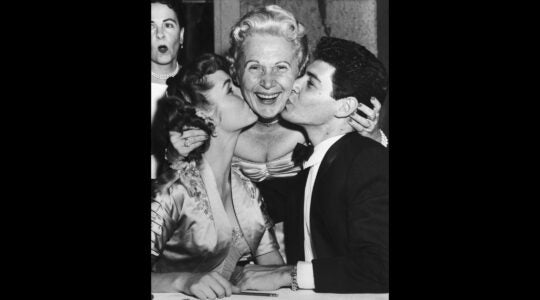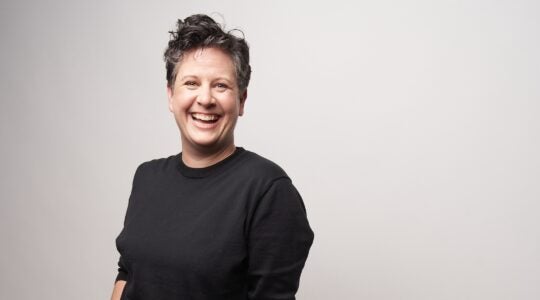The Orthodox Union (OU) is truly an impressive organization. One of the largest Orthodox lay umbrella groups in the United States, it was founded more than a hundred years ago and provides an incredible array of services to the community. Its kosher certification is known throughout the world as a gold standard for excellence. The programs it provides for people who are differently abled, for college students, for children and for teens is truly remarkable. It is hard to fully describe how much the OU has not only enhanced the Orthodox community, but the larger community as well.
I know all this firsthand because for several years I had the great fortune to be employed by the OU as a campus rabbi at Harvard University through the Jewish Learning Initiative on Campus (JLIC) program. I got to know members of the lay leadership and the staff and experienced their dedication and commitment to their work and to the Jewish people. It is precisely because I know how much good the OU does and because I care so much about the future of the organization that I directly respond to the recent resolution and psak on the role of women in OU member synagogues.
The Orthodox Union is creating division when it need not exist and driving a wedge between Jew and Jew for no reason other than the incessant, vocal and fierce advocacy of a small group of activists who are intent on manipulating our communal organizations to divide for the sake of ideological purity. I will address the psak offered by the rabbinic panel the OU consulted and address the challenges in their response on three levels: Motivation, Halakha and Process.
I. Motivation
In the opening words of the psak the rabbinic panel asserts: “This tension pits egalitarianism, a central value of modernity, against a time-honored tradition that clearly speaks of equally valued, yet different, roles for men and women.” This argument that, on one hand, there is the modern externally sourced value of egalitarianism, while on the other hand, there is the “time-honored tradition” of inegalitarianism comes up throughout the psak. Indeed, this tension is set up as a clear and unequivocal dialectic:
“… there are frequently societal trends which run counter to the ethos of the Torah.”
“Halakhic leadership must, therefore, continually probe whether proposed changes and accommodations will enable the community to advance the objectives of an authentic Torah ethos, or simply accommodate prevailing values and expectations, often in opposition to the Torah worldview.”
“… a commitment to follow the ethos of the Torah … requires faith, commitment, and a willingness to embrace timeless principles – even when counter-cultural and incompatible with prevailing societal values.”
The irony must be noted. The rabbis of this psak have no difficulty in sourcing the global phenomenon of women’s spiritual leadership in the Orthodox community on external (i.e. dangerous, foreign) values but see the opposition to it as only stemming from the pure, untouched vacuum of a Torah worldview that exists within but entirely uninfluenced by the societies it inhabits. The practice of seeing Jewish values as ahistorical and divorced from the world in which it lives is a well known perspective within Jewish thought. It is just not a Modern Orthodox perspective.
Modern Orthodox Jews learn science, history, literature, philosophy and other fields because they are intrinsically important to our development as ovdei Hashem. We want to understand the trends, movements and currents in which human history developed so that we can have a fuller understanding of our own history and how we came to our contemporary reality. How history, scientific knowledge and other areas impact halakha and Jewish practice is a complicated and nuanced topic, but its nuance is a result of the challenge it presents. It is not to be swept under the rug and to be denied, but rather grappled with and, at the very least, acknowledged.
How could these esteemed rabbis write an entire opinion on the role of women in Orthodox synagogues and not mention in even passing the historical currents in which the thinkers used as examples of precedent developed? To be able to write that they find it “implausible to say that the question of female ordination has never presented itself throughout the history of our mesorah” is simply astounding.
Why would the question of female ordination present itself as a significant force to be reckoned with in responsa literature when the idea of women occupying positions of leadership anywhere would be unheard of? The rabbis in this psak present it as obvious that Orthodox women would yearn for leadership in the community at a time when women can be CEOs, political leaders and more but take no time to discuss why the opposite throughout much of history was also true. How does that impact the way earlier halakhic opinions are weighed in the halakhic process? We will have no idea because the authors of this ruling do not even acknowledge this as a reality. It ultimately throws the entire ruling into question when the most basic of historical scholarship on the topic is utterly missing from the presentation.
II. Halakha
Let us now turn to the halakhic presentation in the psak. The introduction to the halakhic methodology section begins with a caution that the ability to issue rulings on matters beyond kosher pots and pans in a domestic kitchen can only rest with rabbis who possess years of scholarship and experience. This, of course, is not an unusual statement, but what is fascinating is the following addition to what these presumably elderly and very experienced authorities must also give thought to: “… consideration of factors that transcend strictly legal sources and require a broader approach.”
We are never told what those factors that transcend legal sources are. We know it is not any awareness of history because that is given no mention in the ruling. We also know it is most certainly not egalitarianism, which according to the authors, is a solely foreign influence. Could these factors be counter-cultural, but equally foreign and equally contemporary issues, such as the rise of conservatism and part of a larger pushback to advances for women? Since the authors only see outside influence in liberalizing forces we will never know, but it is certainly a possibility.
The authors turn to an appeal of community practice as a form of determination of Jewish law as evidence to barring women from spiritual leadership. They cite the oft-quoted wording in the Talmud “פוק חזי מאי עמא דבר – Go and see what the people are doing” as evidence that the norms of the community have great legal weight. Rashi states simply the understanding of this dictum as “what the community is accustomed to do.” This is not frozen in time, but rather quite dynamic. Indeed, if it was frozen in time, the rabbis of the Talmud would not need to exclaim to go out and see what the people are doing because once they would have seen it a single time that would have been enough because it would never change. Rather, what the people do changes throughout history, place and culture.
As this is the case, “go and see what the people are doing” is a resounding endorsement for women’s spiritual leadership. No, it is not the case in parts of Brooklyn, parts of New Jersey and in certain neighborhoods in Los Angeles but it is the reality for thousands of Modern Orthodox Jews and numerous synagogues up and down the eastern seaboard, in California and in kehilot and cities in Israel. It would seem that the rabbis who authored this psak need themselves to “go and see” the thriving communities of Shomer Shabbat Jews who are part of communities with female spiritual leadership. The entire ruling is written like this has not happened already blindly unaware of the fastly growing and well established reality of our time. It is as if a rabbi today would author a halakhic opinion on whether it would be permissible to establish a Jewish state in distinction from thousands of years of Jewish precedent unaware that a Jewish state has been thriving for decades!
This lack of acknowledgment of the large, inter-generational centers of community throughout the world that have female spiritual leadership makes much of the rest of the halakhic reasoning in the article moot. Why discuss the finer nuances of whether a non-practice of something is a minhag if indeed communities have been practicing it for years? The very discussion is divorced from reality and retains a purely theoretical dimension to it.
The next area the authors appeal to are meta-halakhic Biblical exhortations to, for example, “do the good and the just.” Haemek Davar beautifully teaches that the lesson of “to do good and the just” is to commit acts of loving-kindness for your friend. Rashi learns from this profound call to seek compromise in legal decision making. These teachings, far from conclusively leading us to limit the roles of women’s leadership, could be seen as opportunities to rise up to the unprecedented moment our generation affords us to find a seat at the table of communal leadership for the other half of the Jewish community. It would seem that the lens that one brings to how these messages inform this discussion is dependent on other factors, like how one sees women’s advancement generally.
The rabbis of this psak refer to the crux of the issue, which is in their eyes, the challenge of serarah, wide-ranging and decisive leadership. Rambam rules that a woman cannot ascend the throne and become the sole monarch because of serarah. Interestingly, the Rambam applies this to converts as well but no OU resolution has been issued forbidding rabbis who are converts. It is also not without irony that it is a panel of rabbis that write that serarah applies to the modern day rabbinic position. The governance of modern day synagogues, the power of lay leadership to hire and fire their rabbis and to impose limits on their position through contracts negates the entire notion that rabbis possess a position of serarah. It is more an expression of what these rabbis wish their positions constituted to call it serarah than a reflection of reality. The inconsistency of applying this rule to converts also betrays the genuineness of this argument.
What is most striking in the presentation of the halakhic arguments in this psak is the reliance on calls to modesty that run inconsistent to the practices of so many Modern Orthodox congregations and communities. To assert an unbreachable division of women and men in the synagogue would come to prohibit women offering Divrei Torah, sharing announcements, reciting Hagomel, saying Kaddish and, more generally, just being seen during services. In the great debate of the mid-twentieth century as to how high the mechitza must be, these rabbis seem to side with the Haredi communities that require a wall with no visibility so as to not breach the modesty of the community.
If you are a woman who has found solace in the ability to recite kaddish in synagogue, or if you are a male who cherishes the ability of your female family members to see and be seen, to know and be known in your synagogue then the presentation offered in this psak runs entirely inconsistent to the life of Torah and mitzvot that you live. The arguments presented in this ruling go far beyond the question of female clergy but have implications that go to the very heart of how we live in our neighborhoods, whether in Pico-Robertson, the Upper West Side, Teaneck, Riverdale, Skokie, Efrat, Jerusalem, Modi’in and countless other places.
Even if you are not a supporter of female spiritual leadership but still a supporter and a beneficiary of just the status quo in our Modern Orthodox communities you must question this ruling and whether it truly represents our reality.
III. Process
The final critique of this psak is a foundational critique that undermines the very veracity of the positive endorsement of women’s scholarship that this ruling seemingly endorses. In the concluding statement of the psak, the authors declare “boruch Hashem,” thank G-d that women’s advanced Torah learning continues to multiply and there are women capable of in-depth halakhah. Yet, the composition of this panel does not represent that positive declaration.
The rabbis on this panel are all well known for their legal expertise and Torah knowledge, yet why is the voice of one of the many, “boruch Hashem”, women capable of in-depth halakhic learning not included? In a matter as important as this and with such far-reaching ramifications would it not have been wise to include a women at least in an advisory role? There is precedent in the Gemara for including the perspective of women in understanding the laws of menstruation, medicine and other areas. Why was precedent not followed here and their voices not included formally? The panels that the OU convened to present to the rabbinic body does not suffice because it was not a formal intrinsic part of the decision making as evidenced by it not being mentioned at any point in the psak, as opposed to the precedents in the Gemara when the woman’s opinion is explicitly mentioned.
Furthermore, as well respected as these rabbis are, there is no one on this panel that would present a sympathetic perspective to women’s spiritual leadership, Is not the role of a panel to represent the various constituencies? This follows the general lack of any awareness of the vibrant communities where this leadership already exists. The entire thrust of this psak operates in a scenario where this is hypothetical, so if that is the case, why include anyone on the panel who represents that perspective? In truth, there are noted and respected rabbis in both North America and Israel who could have participated but none were included. The conclusion was already set from the first day of the convening of this group and all the arguments presented in this psak are merely rationalizations for an already decided conclusion.
Lastly, to what goal is this psak and subsequent resolution aiming for? Unlike the resolution from the late twentieth century to forbid OU synagogues to maintain mixed seating services, the OU synagogues that have female spiritual leadership are leading Modern Orthodox synagogues in their communities. They are filled with people who observe Shabbat, kashrut, and send their children to day schools. The size of some of these synagogues represent some of the largest synagogues in the entire umbrella of the OU. They are not in decline but rather in full strength and vigor.
These communities rely on rabbinic leadership both in the United States and Israel that run significant institutions of Jewish learning in the Modern Orthodox community. They are the rebbeim of the yeshivot and seminaries our children go to for their year in Israel and are Chief Rabbis of the largest Modern Orthodox cities in Israel. Is the goal of the OU to split off some of its most successful vibrant Modern Orthodox synagogues from its organization? Does it wish to rebrand as no longer Modern Orthodox? Why is there an insistence to create a crisis when none exists? Are there members of synagogues in Flatbush that are being coerced into praying at synagogues they do not wish to? This psak and the resolution ends the umbrella for Modern Orthodoxy that the OU aspired at one point to be and does so needlessly.
The calls of the activists within the Orthodox camp that insist on uniformity and ideological purity are hard to ignore. There is an inherent flaw in Orthodoxy in that anyone who lobbies for a more restrictive approach is granted more weight and is difficult to counter. We worry to no end about the slide to the left, whatever the left may be at the time, but we rarely give thought about the slide to the right. The activists have succeeded in publishing a destructive resolution backed by a psak that does not represent the Modern Orthodox community composed by a panel of rabbis that already had its outcome before they even met for the first time. This is a shameful moment for the OU, an organization I used to admire for its inclusivity and its embrace of diversity in the Orthodox community.
All posts are contributed by third parties. The opinions and facts in them are presented solely by the authors and JOFA assumes no responsibility for them.
The New York Jewish Week brings you the stories behind the headlines, keeping you connected to Jewish life in New York. Help sustain the reporting you trust by donating today.




